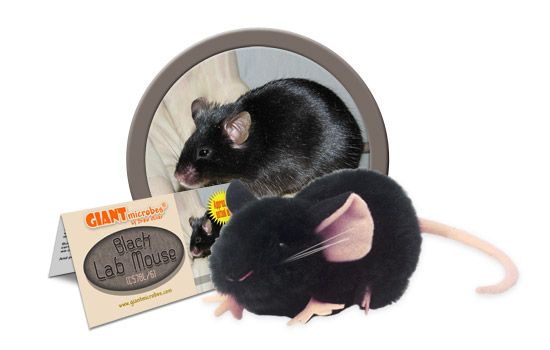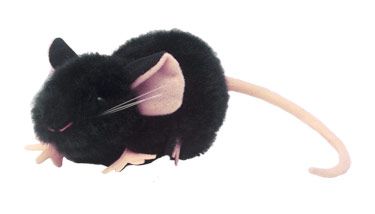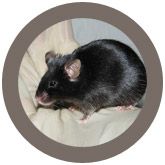Black Lab Mouse (C57BL/6)
Out of Stock
Product Details
Additional Information
| Sizes | Giantmicrobes are based on actual microbes, cells, organisms and other critters, only 1,000,000 times actual size! Gigantic (GG) 16-24" XL (XL) 10-15" Original (PD) 5-8" Keychain (KC) 2-4" with clip |
|---|---|
| Materials | Plush from all new materials. Stuffed with polyester fiber fill. Surface washable: sponge with water & soap, air dry. |
| Packaging | Each plush microbe includes a printed card with fun, educational and fascinating facts about the actual microbe or cell. |
| Safety | Every product meets or exceeds U.S. and European standards for safety. For ages 3 and up. |
All about Black Lab Mouse (C57BL/6)
FACTS: The word mouse derives from the Sanskrit “mush” meaning to “steal.” But if the race of mus musculus pinched grain from our forebears, it has more than made up for it in modern times: the lab mouse is the unsung hero of modern medicine, and there are millions of people who literally couldn’t live without it.
Of course, untold numbers of fruit flies and the nematode C. elegans have also made the ultimate sacrifice and rendered incalculable service to humanity. But for many questions relating to genetics, immunology, cancer-research, and drug testing, only a mammalian relative is close enough on the family tree to provide answers. And as far as mammals are concerned, mice are among the smallest; they breed and mature rapidly (and prolifically); they have gentle fathers who do not harm their young (which facilitates breeding); and they have an easy, pleasing disposition.
Nevertheless, because we feel a common bond with our murine relatives, using them without their consent to harvest the tree of knowledge raises moral and ethical concerns. Indeed, certain mice-families have given hundreds of generations of their kin for our account. (The C57BL/6 family, raised on Miss Abbie Lathrop’s farm in the early 1900’s, has provided some of the noblest service of all.)
But regardless of whether our mortality justifies the morality, we should certainly acknowledge and be grateful for the magnitude of the debt that we owe to these tiny creatures.
And perhaps a bit of cheese from time to time isn’t so out of line after all?
| Name | Naming conventions for these lab rodents consist of a combination of capital letters and numbers that describe the parent strains and their sub-strain rank. This particular variety was the sixth sub-strain produced by mating the two C57BL mice. |
|---|
| Actual Size | Like any other animal species on the planet, they vary greatly in size and weight. On average, a lab mouse weighs 20 grams and lives between 1.5 to 3.0 years. That’s how often a new iPhone comes out! |
|---|
| Where It Lives | Out of over 3,000 varieties of lab mice, the breed of black mice known as C57BL/6 is the most well-known and widely used animal models in research. They’re an inbred variety of mice raised in laboratories to be used as research specimens for studying behavioral patterns, genetic inheritance, chronic illnesses, and immunology. Inbred strains are produced from at least 20 generations of mating from the same litter to obtain the highest possible level of genetic uniformity. |
|---|
| History | Developed in the lab by Dr. Clarence Cook Little in 1921. He was the first to establish the use of inbred mice in studying genetics. |
|---|
| Fascinating Facts | These mice can give birth to a new litter every 3 weeks! |
|---|






